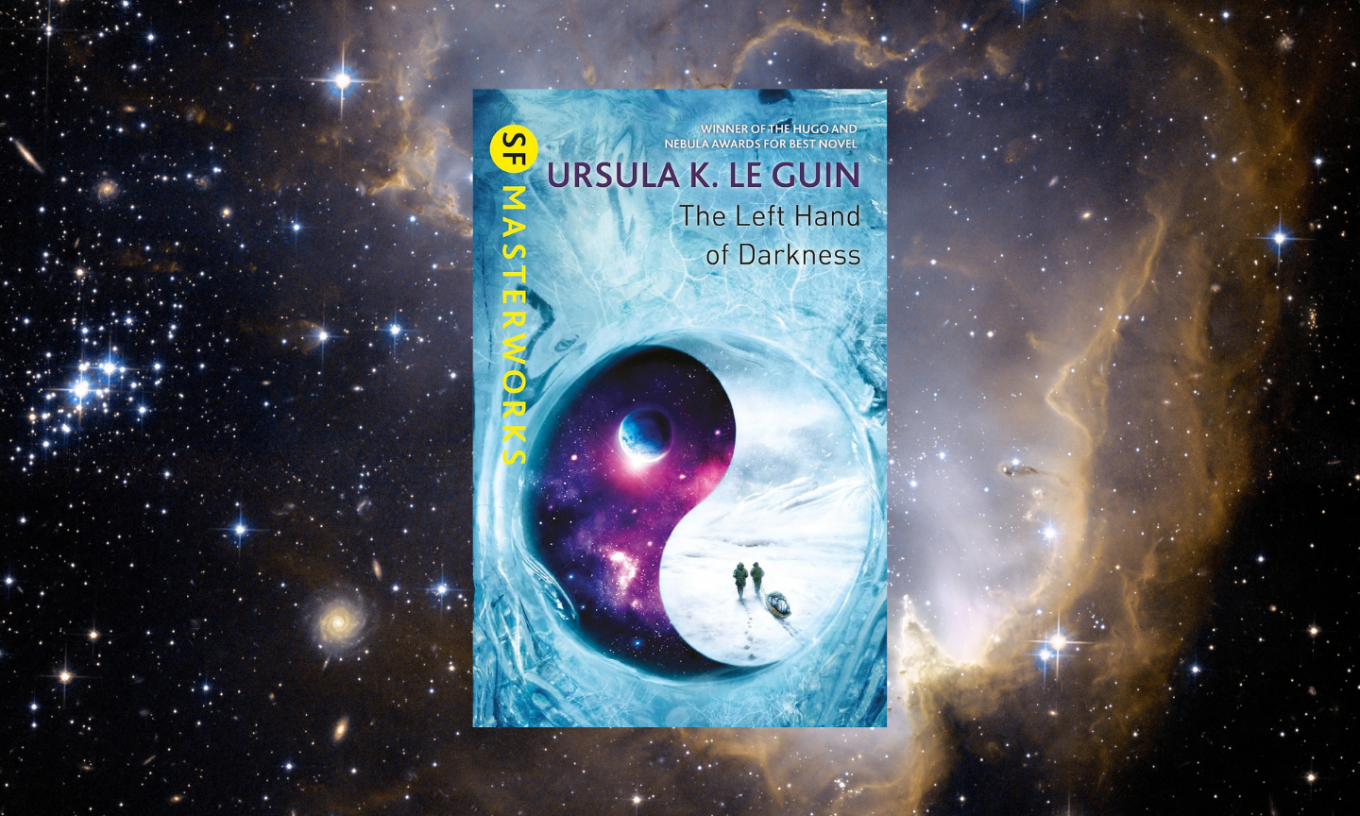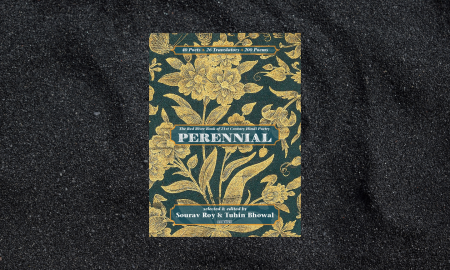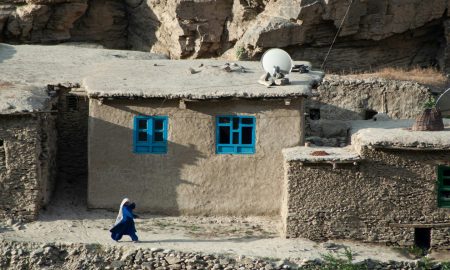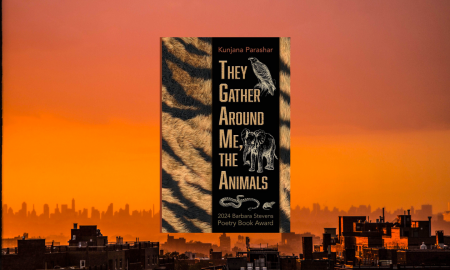Ursula K. Le Guin’s, The left hand of darkness was first published in 1969. The basic principle of this science fiction novel has its origins in her first three novels, Rocannon’s World (1966), Planet of Exile (1966), and City of Illusions (1967). The common theme in these books is of interplanetary expansion started by human beings, not from Earth (Terran), but from a planet called Hain whose people colonized many neighbouring planetary systems, possibly a million years before the setting of the novels. Each planet was a subject of thought experiments in an effort to re-establish a galactic civilisation, known in her earlier works as the ‘League of all Worlds’. At least two thought experiments are used in each novel. The first: all humans had a common origin and descended from the original Hainish colonizers. The second idea is unique to each novel.
In The Left hand of darkness, the second idea deals with androgyny. Human beings on the planet Gethen are androgynous. For 21 or 22 days they are asexual (somer). For the next two to five days they are in a potent sexual phase (kemmer) but with no knowledge whether they will turn male or female, and with no choice in the matter. The same person can, in one phase, be a child-bearing mother to children and, in another phase, a father to others, each capable of bearing responsibility for pregnancy, lactation and child-rearing. The experiment here is aimed to eliminate gender hierarchies and aggressions; rape, seduction and even war, by giving each individual an equal chance to experience both gender identities.
By the time events take place in this novel, the League of all Worlds has been reconstructed as the Ekumen, a union of 83 worlds representing 3,000 countries, spanning two hundred and fifty light years from border to border. Its purpose: to develop slowly, and through consensus, trade not only in goods but in knowledge, technologies, ideas, philosophies, art, medicine, science, theory. Underlying this is an attempt to reunify the mystical with the political. It is not a kingdom but a coordinator, serving to weave all aliens into one fabric, reflecting both the unity and diversity of the civilised world.
The book was widely praised by science fiction writers, academics and literary reviewers and considered a masterpiece in lifting the standard of science fiction with its chilling tale of a planet in an Ice Age, a beautifully evolved but tragic friendship, and the enigmatic possibilities of an androgynous existence. The book won the Nebula Award in 1969 and the Hugo Award in 1970, the most prestigious awards given to science fiction. In the February 1970 issue of the journal Galaxy Science Fiction, fellow fiction writer Algis Budry praised the novel as “a narrative so fully realized, so compellingly told, so masterfully executed”; “a novel written by a magnificent writer, a totally compelling tale of human peril and striving under circumstances in which human love, and a number of other human qualities, can be depicted in a fresh context.”
The novel has two main protagonists: Genly Ai, a male native of the planet Terran (Earth) sent to invite the planet Gethen to join the Ekumen; and Estravan, Prime Minister to Argavan Harge, King of Karhide, a country on Gethen, who, overnight, is declared a traitor and exiled, and who must flee to the bordering country, Orgoreyn. The king is suspicious of Estravan conceding disputed border territory to Orgoreyn, but mostly fears the Ekumen, which Estravan foresees as the greatest hope for long-term peace. The King’s formal indictment: “He (Estravan) having urged privily and openly in Assembly and palace, under pretense of loyal service to the king, that the Nation-Dominion of Karhide cast away its sovereignty and surrender up its power in order to become an inferior and subject nation in a certain Union of Peoples, concerning which let all men know and say that no such Union does exist, being a device and baseless fiction of certain conspiring traitors who seek to weaken the Authority of Karhide in the king, to the profit of the real and present enemies of the land…’
It takes two years for Genly Ai to get an audience with the King through Estravan’s good offices. But on the night before the meeting, Estravan intuits his own compromised position with the king, and tries to tell Ai that he can no longer push his case, but Ai mistakes this for an ambiguous and ‘effeminate deviousness’. This is Estravan’s Gethenian shifgrethor: the unspoken custom of giving indirect advice, to save honour and face by avoiding confrontation. The King rejects Ai’s proposal to join the Ekumen. Estravan is replaced by Tibe, the king’s cousin, as Prime Minister, who nourishes further fear in the psychotic king and propagates a new religion: war against Orgoreyn. Ai travels to a Fastness, a dwelling of people of the Handdarata, one of two major Gethenian religions, for a foretelling, seeking an answer to the question whether Gethen will join the Ekumen. After several months of travelling through Karhide, Ai decides to pursue his mission in Orgoreyn, to which he has received an invitation.
Ai finds the Orgota (pertaining to Orgoreyn) politicians initially far more direct with him. He is given comfortable quarters and allowed to present his invitation to the council that rules Orgoreyn. Three of the thirty three members of the council are particularly supportive of him, belonging as they do to an ‘Open Trade’ faction which wants to end the conflict with Karhide. Estraven is found working with them and tells Ai that he was responsible for Ai’s reception in Orgoreyn. Despite the support, Ai feels uneasy as, Estraven, through his knowing but shadowy presence, warns him not to trust the Orgota leaders, for it is the majority faction or the secret police (Sarf) that truly controls Orgoreyn. Ai ignores both his feeling and the warning, is betrayed by the Open Trade faction, unexpectedly arrested one night, and sent to a labor camp in any icy desert where he suffers from bitter cold, is underfed, forced into labor, and given vericidal drugs to bring on a slow debilitating death.
To Ai’s great surprise, it is Estraven – whom Ai still distrusts – who goes to great lengths to save him. Posing as a prison guard, he carries an unconscious Ai out of the labor camp, using his training with the Handdarata to induce dothe, or the voluntary controlled use of ‘hysterical’ strength to aid him. The pair begin a perilous 80-day trek across 800 miles of the Gobrin ice sheet through the winter of an Ice age, to return alive to Karhide. Estraven believes that the reappearance of Ai in Karhide will convince Karhide to accept the Ekumen treaty, knowing that Karhide will want the honor of doing so before Orgoreyn. In the course of the journey Ai’s distrust and suspicion turn into recognition of Estraven’s spiritual strength and vision, forming a bond of love and friendship between the two.
When they reach Karhide, Ai sends a radio transmission to his ship, which lands a few days later. Estravan is betrayed by a friend with whom the two hide on the Karhide border, and is shot dead by Tibe’s border guards. But his prediction is borne out when Ai’s presence in Karhide triggers the collapse of governments in both Karhide and Orgoreyn – Orgoreyn’s because its claim that Ai had died of a disease was proven false. Karhide agrees to join the Ekumen, followed shortly by Orgoreyn, Ai accomplishing his mission as the first mobile envoy to planet Gethen (referred to as Winter by the Ekumen).
Ursula K. Le Guin’s interest in Taoism influenced much of her science fiction work. In The Left hand of darkness as in much of her Hainish fiction, there is a balance between light and darkness, a central theme of Taoism. As a teenager she came across the writings of the legendary sage, Lao Tzu who lived in China more than two millennia ago and, as the first philosophical Taoist wrote the Tao Te Ching. One of the main ideas of Taoism is the belief in balancing forces, or yin and yang, the two aspects of the Tao (or Dao) from which the cosmos springs, giving birth to all things material and spiritual. These represent matching pairs, such as light and dark, hot and cold, action and inaction, which work together towards a universal whole. Yin and Yang represent a connectedness in the universe, nothing making sense by itself. In the Taoist structure of the universe, humans are meant to accept the Tao or “The Way” which is this balanced natural order between humans and the world. This is the concept of wu-wei, which translates as ‘non-action’, but really means to flow with the true nature of the world, and not strive too hard for desires.
Derance A. Rolim Filho writes, “The eternal interplay of yin and yang, represented by the well-known symbol of a black curve with a white spot nestled into a white curve with a black spot, makes the cosmos everchanging, perpetually in motion…..These aspects, Yin and Yang, are not static or immutable; on the contrary, each one transforms into the other, each has the seed of its opposite. As day and night, they follow each other ceaselessly. Thus it is that their nature is not of absolute opposition, like a plastered binary paradigm, but rather of complementarity within a unity: two forces that are one”[1]
Harmony being key to the Taoist perspective of balance and to the observance of the Way, Filho writes of Taoism’s influence on Le Guin: “The Tao te Ching had such a deep impact on her that, as she said, ‘it is hard for me to articulate’ (Le Guin and Naimon 44). She has even gone as far as describing herself as ‘an unconsistent Taoist and a consistent unChristian’ (Wood 8)”[2]
We first see the influence of Taoism in the followers of Handdara in the Fastness of Otherhord which Ai approaches for a foretelling. From a distance, he sees two persons practice the Handdara discipline of Presence by standing motionless like statues in a kind of trance, a discipline aimed at experiencing Immanence through extreme awareness. One of these figures is Faxe the Weaver whom Ai sees as an “extraordinary character, as limpid and unfathomable as a well of very clear water.” The wu-wei aspect of not interfering with the patterns of nature is further seen in Ai’s observation: “It was an introverted life, self-sufficient, stagnant, steeped in that singular ‘ignorance’ prized by the Handdarata and obedient to their rule of inactivity or non-interference.”
It is in the constitution and dynamics of the group members that participate in the foretelling that gives us a clue as to how harmony comes out of chaos, clarity out of madness, the Weaver balancing the strands to pronounce the prediction. Among the nine members who sat in a high stone-floored hall, dimly lit by a couple of slit windows and a fire in the deep hearth, were two ‘Zanies’ or schizophrenics, five Indwellers, a person in kemmer and a ‘pervert’, artificially aroused through female or male hormone injections days prior to a session. Through Ai, Le Guin gives us a glimpse of the process: “The emphatic and paraverbal forces at work, immensely powerful and confused, rising out of the perversion and frustration of sex, out of an insanity that distorts time, and out of an appalling discipline of total concentration and apprehension of immediate reality….were controlled”. As Weaver, Faxe is the centre who controls the connection, the communication that runs wordlessly through the spider web that connects them all – a web through which force, tension and silence grow. It is in the centre of darkness that Faxe appears androgynously as a woman, a woman dressed in light.
After the foretelling, the enigma of the Taoist Way is seen in various statements that Faxe makes to Ai: “We in the Handdara don’t want answers. It’s hard to avoid them, but we try to”; “we come here to the Fastnesses mostly to learn what questions not to ask”; “why have we perfected and practice Foretelling? To exhibit the uselessness of knowing the answer to the wrong question.” Also in Faxe and the Foretelling, the reader gets a first glimpse of the possible ‘weaving’ powers of the Ekumen.
Le Guin was also influenced by her early interest in mythology, and her exposure to cultural diversity as a child. Her protagonists are frequently interested in the cultures they are investigating, and are motivated to preserve them rather than conquer them[3]. Her father was Alfred Kroeber, an internationally-known anthropologist, and her mother Theodora Kroeber, a biographer and a writer of children’s stories. Le Guin used the term Ekumen for her fictional alliance of worlds, a term coined by her father, who derived it from the Greek oikoumene to refer to Eurasian cultures that shared a common origin.[4]
The myths and legends used in The left hand of darkness serve to explain specific features of the Gethenian culture, as well as the larger philosophical aspects of this society. Many of the tales used immediately precede chapters describing Ai’s experience with a similar situation, serving as allegory, allowing the culture to speak for itself. Of the five myths narrated, one of the most interesting and least discussed is the myth of ‘Estravan the traitor’.
An ancient Karhide tale recounts the blood feud between the Domain of Stok and the Domain of Estre that ran through generations, for it was a dispute over land. In the first part of the story, Arek of Estre or Estravan loses his way while hunting and is frozen as he falls into a lake. He sees a light in a small house in a forest. It is the house of the enemy – Therem of Stok. Arek manages to stagger to it, is welcomed and revived. In a metaphor, Taoist in nature in finding the centre among extreme polarities, Therem of Stok extends friendship. He lays his palm against Arek’s, shows them to be “the same in length and form, finger by finger, matching like the two hands of one man laid palm to palm”. Arek reaches kemmer and the two become kemmering partners for the next few days. Arek is killed by a party of men who enter the hut. Stokven asks the men to put Arek’s body on a sled and take him to Estre for burial. Instead, they leave the body in the forest for wild beasts to eat, for which they are banished. Therem of Stok leaves his Domain to dwell in Rotherer Fastness for a year.
Meanwhile the Domain of Estre mourns for Arek for he had been the lord’s only child of his flesh. When winter lay heavy on the land, a man came up the mountainside on skis, and gave to the warder at Estre Gate a bundle wrapped in furs: “This is Therem, the son’s son of Estre,”he said. The old lord Sorve, father of Arek, saw in the baby his lost son. He ordered that the child be reared as a son of the Inner Hearth, and called Therem, though that was not a name ever used by the clan of Estre. When the boy grew, he was named the heir of Estre.
Angered, Sorve’s other sons lay ambush against young Therem when he goes out hunting. Therem kills three of his hearth brothers, though he himself is grievously wounded. He enters an abandoned hut in the dark of night and falls on the cold hearth. A man enters alone, builds up a fire, cleans Therem’s wounds, binds them and says, “I am Therem of Stok”. “I am Therem of Estre”, replies Therem. “Did you bind up my wounds in order to kill me, Stokven?”
In a metaphor that recurs, Le Guin writes: “For an instant Stokven laid his palm flat to Estravan’s palm, and finger by finger, their two hands matched, like the two hands of one man. Stokven said: ‘I wish there might be peace between our houses.’ Estravan said, ‘I will vow peace with you.’” A party of people from the nearest village come to carry Estravan home to Estre. There none dared oppose the old lord’s will. At Sorve’s death, Therem becomes lord of Estre. Within a year he ends the old feud, giving up half the disputed lands to the Domain of Stok. For this, and for the murder of his hearth brothers, he was called Estraven the Traitor, Yet, his name Therem is still given to children of that Domain.
This myth mirrors the dispute in the main tale between the two countries, Karhide and Orgoreyn over the disputed Valley of Sinoth bordering both countries. Except for forays and minor killings, Gethen as a planet has no word nor experience of war. As prime minister, Estraven tries to end the dispute by moving Karhidish farmers out of the disputed territory to save lives. His bid for peace and long-term vision are seen as concession and betrayal by King Argaven, with Estravan exiled and pronounced traitor. Yet, it is his vision of the Ekumen that fires Estravan’s imagination as a beacon light of hope for expansion, unification and peace, as he goes to great lengths to save Ai and his mission. These are the shifting shapes of yin and yang, seeking harmony even among contending forces. Arek is sacrificed for hope to spring anew. Therem gains peace for two domains but is called traitor, even when his name lives on through the sons of succeeding generations. Estravan is patriot to the cause of the Ekumen for it represents oneness rather than division, but is branded traitor and sacrificed in the interest of peace. But Ai gets Karhide to sign the treaty with the Ekumen, so Estravan’s name will be cleared, even if posthumously.
As Jean C. Cooper states, “they (Yin and Yang) are at one and the same time a division and a reunion, and if they are spoken of as contending forces, they are also cooperating powers and the tension in which they are held is that of harmony, of the mutual play of creation, not of conflict.”[5]
The journey that Estravan and Ai undertake across the northern Gobrin ice sheet is a death-defying one symbolic of the terrors of a spiritual journey that most aspirants undertake alone. It takes them, with the barest necessities, through mountain, ravine, crevasse, volcano, glacier, ice sheet, frozen bog, frozen bay – all desolate, shelterless and lifeless through the storms of midwinter.
Le Guin’s descriptions of the arduous journey are breathtaking. Through the discomfort of breathing sulphurous fire and ash of snow volcanoes Drumner and Dremegole, there are moments of spectacular beauty in the sight as described by Ai: “Out of the cliffs and bends and masses of the great ice-field’s edge, black ridges rose; one great mass loomed up out of the plateau to the height of the gateway peaks we stood between, and from its side drifted heavily a mile-long wisp of smoke. Farther off there were others: peaks, pinnacles, black cindercones on the glacier. Smoke panted from fiery mouths that opened out of the ice. Estravan stood there in harness beside me looking at that magnificent and unspeakable desolation. ‘I’m glad I have lived to see this,’ he said.”
There are both storms and the stillness of the night. Though efficiently protected in their tent with a stove for heating, there is the incredible noise of storms with needles of icy air blowing in through the vents. “On other nights it was still, with such a stillness as one imagines as existing before the stars began to form, or after everything has perished.” When temperatures went below fifty degrees freezing, the whole breathing process was “complicated by the rapid freezing of one’s exhaled breath: if you didn’t look out your nostrils might freeze shut, and then to keep from suffocating you would gasp in a lungful of razors.”
The most difficult part of the journey was the great white void for it is a void without shadow, without a track. No sun, no sky, no horizon, no world. Just a white glass ball in which they appear to hang from which they could fall… Writes Barbara Brown, “Genly and Estraven yearn for the dark of the shadow when they are in the antarctic void of the white darkness. Without shadow, without dark, there is a surfeit of light. They cannot see ahead to avoid the threatening changes in the terrain. In total understanding, Genly draws for Estraven the Yang and the Yin, the light and the dark. ‘Both and one,’ he says; ‘A shadow on snow.’ Both are necessary. Ultimately, Genly recognizes their crossing of the ice is both success and failure: union with the Ekumen, death for Estraven. Both are necessary.”[6]
Estravan slips down a crevasse, is dragged up by Ai with the weight of the sled, collapses face down on the ice. In a whistling whisper, he mumbles, “Blue – all blue – towers in the depths – In the crevasse. All blue – full of light.”
Ultimately, it is Estravan who has all the attributes of spiritual strength. As a young man, he has trained for two years in a Fastness of the Handdarata, can invoke dothe strength, has experience of traveling on the Ice, setting up camp with precision, is a meticulous planner – calibrating distances and rations by the day, has great physical and emotional endurance, is trained in undertaking fasts and can live for days without eating, and has complete control over his sexual impulse when he enters kemmer on the Ice. This is where Ai sees the powerful controlled nature of the androgynous Estravan. In his words, “It was from that sexual tension between us, admitted now and understood, but not assuaged, that the great and sudden assurance of friendship between us rose: a friendship so much needed by us both in our exile, and already so well proved in the days and nights of our bitter journey, that it might as well be called, now as later, love.”
Ai’s own attitudinal transformation from an obtuse logical maleness to an inner androgyny is marked by an ultimate understanding of Estravan and the spiritual depth of their friendship. Towards the end of the journey he observes: “What I was left with was, at last, acceptance of him as he was. Until then I had rejected him, refused him his own reality. He had been quite right to say that he, the only person on Gethen who trusted me, was the only Gethenian I distrusted. For he was the only one who had entirely accepted me as a human being; who had liked me personally and given me entire personal loyalty, and who therefore had demanded of me an equal degree of recognition, of acceptance. I had not been willing to give it. I had been afraid to give it. I had not wanted to give my trust, my friendship to a man who was a woman, a woman who was a man.” Le Guin proposed androgyny as a central theme for wholeness. It is only by realising and balancing both the gender aspects of ourselves can we merge into the centred universal expansion of the Ekumen.
***
[1] Derance A Rolim Filho, The Taoist myths of Winter, Mythlore, Spring/Summer 2021, Vol. 39, No. 2, pp 49-63
[2] Ibid., p.50.
[3] Reid, Suzanne Elizabeth (1997). Presenting Ursula Le Guin, New York, USA.
[4] White, Donna R. (1999). Dancing with Dragons: Ursula K. Le Guin and the Critics. Columbia, South Carolina, USA: Camden house.
[5] Cooper, Jean C., An Illustrated Introduction to Taoism: The Wisdom of the Sages, World Wisdom, 2010.
[6] Barbara Brown, The Left Hand of Darkness: Androgyny, Future, Present, Past, Extrapolation, Vol. 31, No. 3, Fall, 1980, pp. 227-235.





